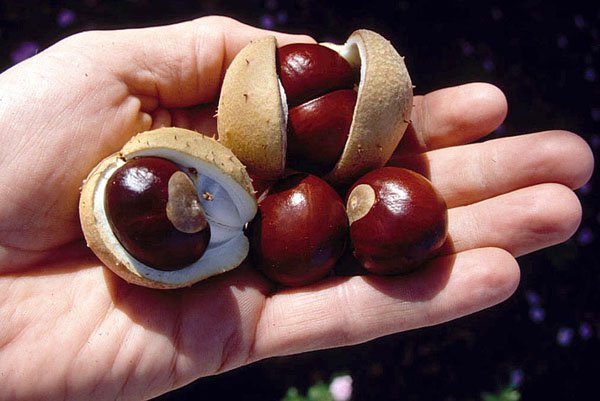
Yellow Buckeye
Yellow Buckeye
Botanical Name: Aesculus octandraFamily Name: Aesculus octandraOrigin: Ohio Valley, Appalachian MountainsWe often think the buckeye tree originated in Ohio, but not so. It is from Chicago area. Its scientific name is, “Aesculus octandra” and it is the biggest tree of its species. It was named a champion tree on the National Register of Champion Trees in 2020.
Her gentle leaves are large and palmate. Her flowers are majestic, beautiful in the spring. Her seeds are large but poisonous to wildlife and humans.
According to legend, the buckeye tree’s nut is a powerful good luck charm. A buckeye does its best work if it’s inside your pocket. If you carry a buckeye in your pocket, it’ll bring you good luck. Just like a rabbit’s foot or a horseshoe or a four-leaf clover, the buckeye attracts good fortune.
The nut of the buckeye is its seed rather than its fruit. It remains on the tree in a spiny shell until it ripens in autumn, breaks from the hull and falls to the ground. About the size of a prune, the buckeye seed resembles a chestnut with a light circle in the center. It's this circle that Native Americans believed looked like a male deer's eye, hence the name "buckeye."
As the tale goes, Ohio's nickname as the “Buckeye State” comes from General William Harrison's 1840 presidential campaign. His buckeye log cabin west of Cincinnati, decorated with a string of buckeyes, became the symbol of his run and even part of his campaign song. The buckeye nut has been the mascot of the Ohio State University since 1950.
From leaves to bark, the buckeye tree is a poisonous plant. Removing the shell and roasting the nut neutralizes its harmful tannic acid content and makes for a protein-packed snack. If not prepared properly though, buckeye nuts are toxic to humans, causing symptoms including weakness, diarrhea, vomiting, paralysis and death. Native Americans once used buckeyes for both nutritional and medicinal purposes. These tribes would crush and knead the nuts into a salve for rashes and cuts. Today, some believe that buckeyes can relieve rheumatism and arthritis pain.
Despite buckeye's faults, George Washington, who loved trees, developed a fondness for it on a trip to West Virginia. He found a variety that in spring bore beautiful flowers and went on to pay the sweet buckeye the highest tribute by gathering its seeds and planting them at Mount Vernon.
Buckeye candy is made to resemble the tree's nut, by dipping a ball of peanut butter fudge in milk chocolate, leaving a circle of the peanut butter exposed. These are a popular treat in Ohio, especially during the Christmas and college football seasons.
The buckeye tree, also known as the Sweet Buckeye or Big Buckeye, is native to North America and grows from Pennsylvania through the South and west to Oklahoma. The buckeye grows 70 to 90 feet high with a trunk up to 3 feet in diameter. The tree produces a rounded crown and upright clusters of bright yellow flowers.
Its leaves have slender stalks up to seven inches long with five to seven leaflets four to eight inches long. The leaves are elliptical in shape and have saw-toothed edges. The Buckeye has bark that is brown to gray and fissured into large scaly plates. It produces a fruit that is two to three inches in diameter. They are pale brown, smooth or slightly pitted capsule splitting along two or three lines. Each fruit contains one to three large shiny brown toxic seeds.
Buckeye trees are usually scattered, and the wood is very seldom cut for grade lumber. Although buckeye is a hardwood it is much softer than many softwoods. Today, the buckeye tree is used primarily for pulp or is planted as part of landscaping. In the past it has been used in the building of furniture, crates, pallets and caskets. Because the buckeye wood was lighter weight than that from other trees, early settlers used it for carving, whittling, the making of utensils and for making strips to be used in creating hats and baskets. It is an especially popular wood for making prosthetic limbs because of its light weight.
Because the buckeye requires deep, well-drained, moist soil, it often grows near streams and rivers. However, those leaves, besides furnishing shade, provide extraordinary health to the environment in absorbing CO2 and storing carbon.